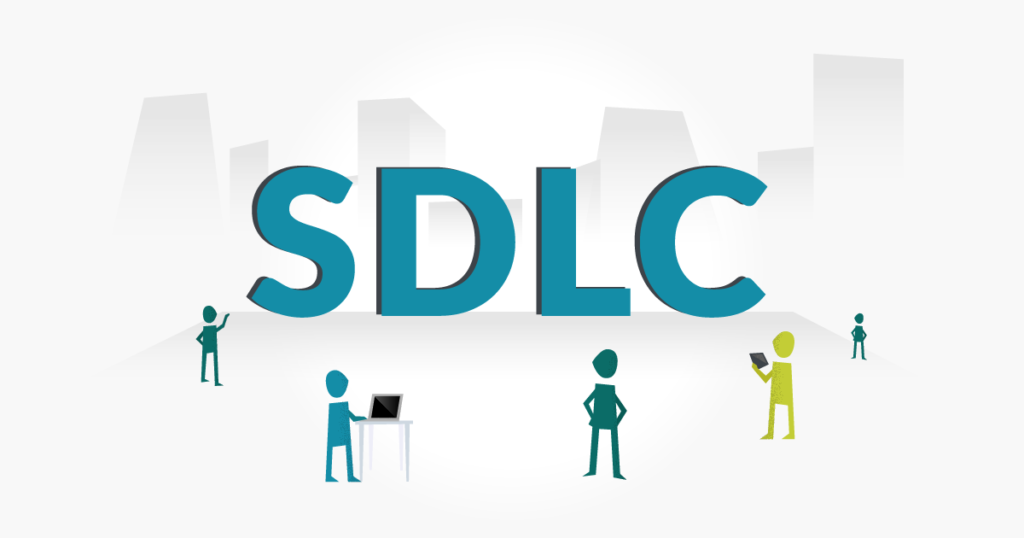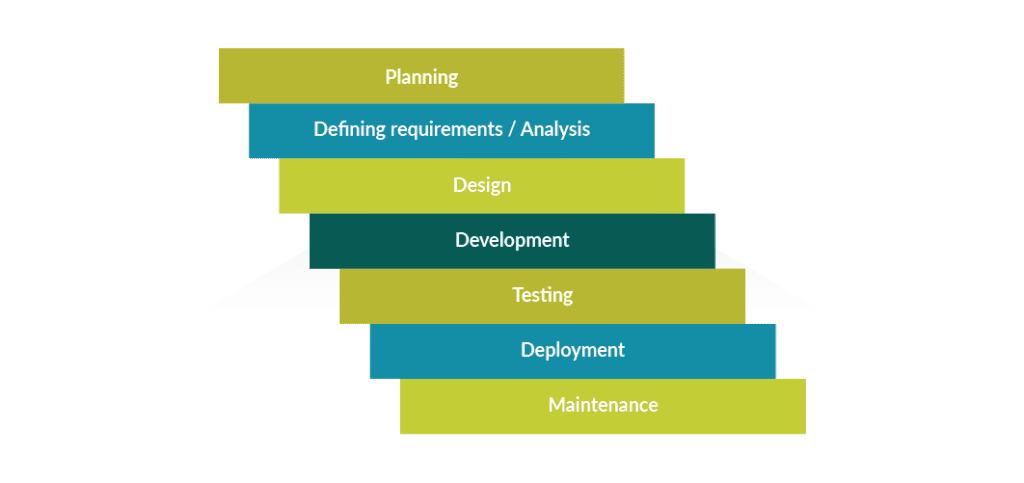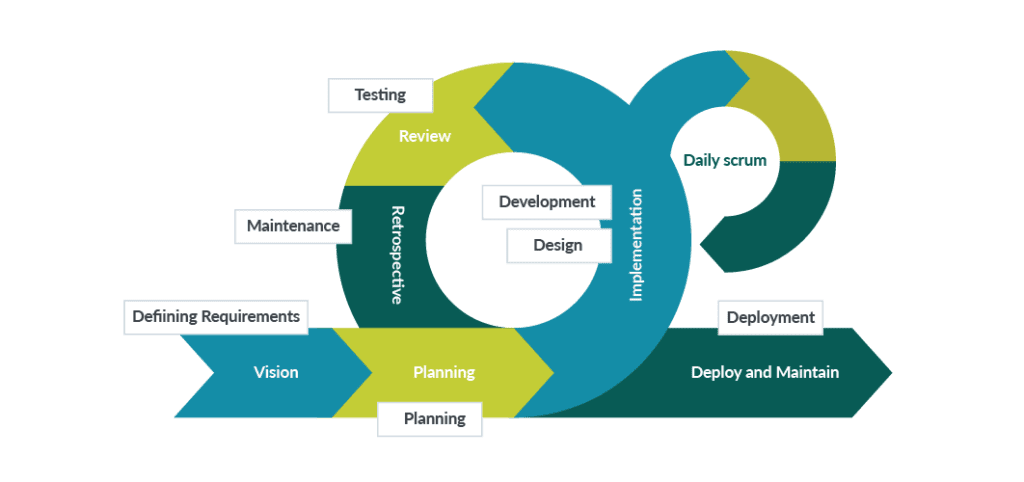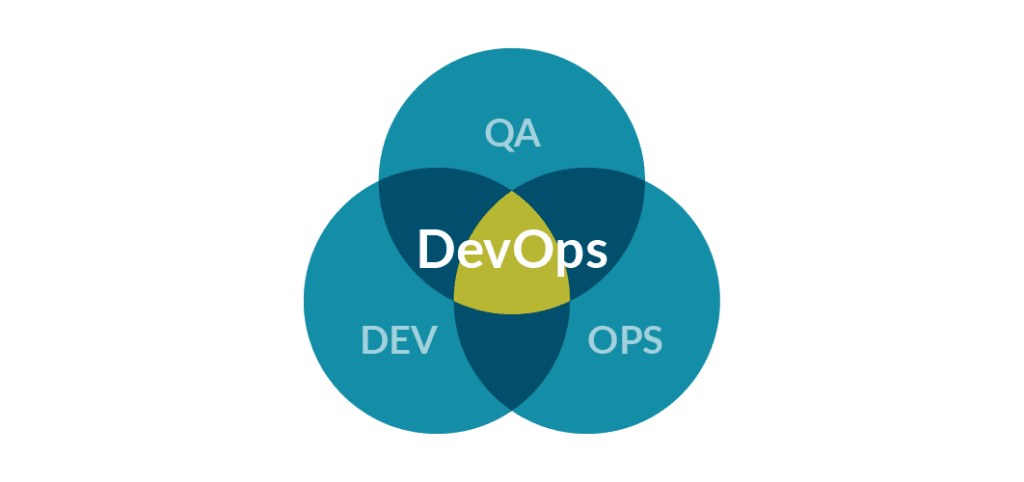An Overview of the Software Development Life Cycle (SDLC)
The Software Development Life Cycle is a set of business best practice templates for building software applications. Commonly referred to as the SDLC, it’s a framework that helps maintain consistency within the software development process. It enables teams to produce high-quality software in an efficient and streamlined way from conception to deployment, including maintenance and everything in between.
Each of the multiple phases has a unique set of processes and deliverables. When adhered to by individuals and teams, the SDLC aligns them for success. It sets them up to deliver the best possible product, ultimately creating happy and loyal customers.

Mục lục bài viết
Why is the Software Development Life Cycle important?
The SDLC is used broadly across the software industry for convincingly practical reasons. Here are some of the ways the software development life cycle helps teams:
- It allows teams to evaluate, schedule, and estimate project deliverables.
- Development teams can plan ahead of starting their processes instead of figuring out essential details as they work.
- Enables developers to predict risks and mistakes in advance, reducing unnecessary costs and delays.
- It gives a framework for thorough planning, development, and testing to aid the delivery of a high-quality product.
- Provides a consistent framework for building software that introduces team efficiencies and increases development speed.
- Customer satisfaction improves by providing a transparent workflow and ensuring that high-quality products are shipped.
Phases of the Software Development Life Cycle
The SDLC typically contains between five and seven phases. Some teams combine, split them up, or even remove individual ones depending on their needs. Sometimes the project manager, product manager, or product ops team will only use SDLC phases that have the most relevance to their organization.

Planning
The planning phase is probably the most critical part of the Software Development Life Cycle, as it sets the project’s success potential. During this phase, project and product managers confirm the allocation of resources, plan capacity, and determine the schedule and cost of the project before then communicating the details.
This initial phase involves setting expectations, and it’s when team leaders assess the project’s terms. As well as setting the scope and purpose, planning also sets boundaries to prevent unplanned scope expansion or shifts away from its original objective.
Requirements analysis is also relevant at this stage, which is the process of collecting and analyzing feedback to influence which requirements to examine in the next phase. Input from stakeholders, customers (potential and current), and other subject matter experts is critical to building high-value software for your users.
Defining Requirements
The requirements analysis phase is an extension of the planning phase, but sometimes, these phases are combined. Feedback from stakeholders is synthesized and formed into functional requirements that engineers and designers can use to produce the necessary work. Requirements help align product development teams on the specific tasks they are assigned to do.
Design
The design phase determines and defines the technical details of a project. For example, depending on the nature of the project, the design phase might include creating screen designs, prototypes, process diagrams, and system interfaces.
During this phase, designers also determine the architecture, programming language, platforms, and user interface designs. This phase effectively takes the product vision and specifies how that vision will come to life.
Development
With the requirements defined and design documents completed, the development team should have everything they need to build the product. All work done in previous stages is leveraged during this phase to make the product a reality. Next, code writing takes place, which is then reviewed and shipped to a QA environment for testing.
Testing
The testing phase verifies that the software functionality meets the defined requirements and prevents major defects from being shipped to end-users in production. A combination of automated and manual testing takes place during this phase. The testing team typically runs many tests, including unit, integration, performance, and functional testing.
The development team receives bug reports from the testing team that informs them about defects to fix. In addition, to help leadership understand the testing phase results, such as the number of tests run and defects found, they, too, receive reports.
The application is made available to users in the production environment during this phase. The deployment process can be pretty complex depending on the application’s environment and architecture. This phase embodies the completion of work. In parallel with Deployment events, product teams partner with marketing and customer teams, get the message out to users, update them on changes, and announce the release of a new product or feature.
Deployment
The deployment phase involves pushing the code to the production environment. After deploying the code, customers can start using the new or updated functionality. By this point, the customer-facing and marketing teams should have the information they need to help customers and announce the launch broadly.
Before release, many teams deploy the code to other environments, such as a sandbox, UAT, or other pre-production environments.
Maintenance
Sometimes referred to as the “monitoring” phase, this last part of the software development life cycle is ongoing. Once the software is built and fully operational, the product needs regular maintenance checks. In addition, some software applications might need upgrades, bug fixes, and improvements to be integrated into new environments or with new systems.
DevOps teams help ensure the product remains available and stable for all users after deployment. However, incidents happen where on-call team members must react quickly to fix issues that arise to minimize downtime. Maintaining the software is as important as building it because, in production, users rely on your product for its intended use.
How SDLC relates to different Methodologies
The SDLC emerged while waterfall was the principal project management methodology. However, SDLCs core concepts can readily apply to other ways of working.
SDLC in an Agile World
The most significant difference between agile and waterfall is not the individual phases but the overall objectives and the speed at which teams can work through the software development life cycle.
With waterfall, teams focus on building a complete product, so the duration of an individual cycle is much longer. However, with agile, teams break the process into a series of small iterative builds, reducing the cycle time. While agile’s purpose is to help teams work faster, SDLC phases remain relevant to waterfall because they offer a framework for structure and direction.
Agile SDLC stages
All phases of the regular SDCL still typically take place in agile, but they may run in a slightly different order when applied to a continuous cycle.

1. Vision
The product manager or product owner Defines the Requirements and writes user stories based on user feedback.
2. Sprint planning
A sprint planning meeting takes place before the work starts. It may contain elements of the traditional Planning SDLC phase.
3. Implementation
- Design: The design and development team create mockups, prototypes, and early versions of features. This sometimes happens one sprint ahead of the actual development.
- Development: The development team writes code based on the requirements or user stories and designs.
4. Review
Unit tests run in the development or testing environment, and manual testing takes place during the implementation phase on the completion of each story. Review is a continuous Testing phase rather than being considered a mark of completion at the end of a project.
5. Retrospective
This is the time to reflect on the implementation. It is also an excellent time to consider Maintenance and write any new user stories that may need development time in future sprints.
6. Deploy and Maintain
The typical SDLC Deployment stage happens once the product owner has signed off on that batch of work. Typically it is scheduled for the first day of the next sprint, or if DevOps is involved, the task could be automated via the workflow/approval of the appropriate people.
The above cycle is typically one to two weeks, focusing on small units of work, usually consisting of specific pieces of functionality or single features.
The Role of DevOps in the SDLC
DevOps evolved from the agile methodology. As the name indicates, DevOps combines development and operations to become an integral component of development teams for deploying code faster and more frequently.
DevOps is a continuous operation because its primary responsibility is to ensure efficient delivery of technology and to ensure it remains available and reliable for users. In the agile world, teams ship code swifter and more often than ever. Some teams deploy code hundreds of times per day. However, the reality for development teams fifteen to twenty years ago was to deploy code once every few months.
DevOps helps development teams operate more efficiently throughout the entire software development life cycle. Their role is critical in development, operations, and quality assurance.
Benefits of DevOps in the SDLC:
- DevOps unites teams and helps drive productivity through automation and new processes. This results in increased release frequency with fewer issues.
- Increased transparency and better communication help DevOps teams minimize platform downtime.
- Standardized workflows and real-time monitoring enable DevOps teams to resolve incidents faster.

Best Practice
Maintaining standards is necessary for any successful project, and the SDLC contains various best practices to adopt.
Maintain data hygiene
Maintaining good data hygiene throughout your stack is essential because data helps teams measure things. Metrics are only usable when the data is accurate. Specifically, data from tools like GitHub and Jira help development teams learn about their productivity.
SDLC Phase: Entire SDLC
Build a documentation culture
Documentation helps get new teammates up to speed quickly, builds transparency across teams, and helps align entire organizations. In today’s remote working world of knowledge workers, documentation is often the number one way to transfer information on a broad scale.
SDLC Phase: Planning, Design, Development
Optimize development workflows
Adopt tools and processes that enable your engineering team to work quickly and efficiently. In addition to making your team more productive, good workflows also create happier and more loyal employees as they find work more enjoyable.
SDLC Phase: Development, Testing, Deployment
Try paired programming
Working together on coding projects creates a culture of collaboration. Collaboration is where developers can learn from each other, ultimately improving innovation and quality.
SDLC Phase: Development
Maintain security requirements
As technology changes, so do security needs. Keep your security requirements current to avoid major security incidents. Doing this allows users to maintain confidence and trust in your service. Penetration testing and vulnerability scanning can play a big part in securing your product or service.
SDLC Phase: Development, Maintenance
Standardize code reviews
Code reviews can be time-consuming, but they are critical to creating high-quality software products. They help engineers adhere to coding best practices and guidelines, which reduces bugs and improves quality.
SDLC Phase: Testing
Create an incident response plan
Things go wrong. Every software team experiences incidents. How you respond to those incidents can make or break your company. Create an incident response plan your team can leverage to swarm together, communicate, and resolve incidents quickly.
SDLC Phase: Maintenance
Conclusion
As we have seen, the software development life cycle is a series of activities and events executed by software teams. More than a “best practice” for developing software, its phases are critical for any software team designing, building, testing, and maintaining a new software product or feature. Unnecessarily skipping stages can result in problems, additional expenses, and team misalignment. There are SDLC variations available, so it’s important to communicate which process you and your team will follow for the current project so all team members can align and the correct systems are put in place to accompany that process.
About the writer

Jake Bartlett
Jake Bartlett lives and works in San Francisco, and has a background in software testing, customer support, and project management.
All Jake Bartlett’s articles











